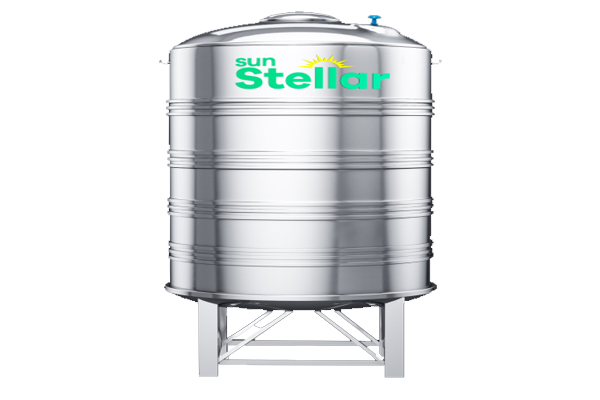Sunstellar Insulated Water Tanks have the advantages of no welds, no leakage, no toxicity, anti-impact, anti-corrosion, long service life, and hygienic standards. The insulated water storage tank is designed explicitly for Extremely Cold Regions where it is hard to keep the water liquid during the day or more often after sunset.
Thick layers of German PUF insulated water tank cover the Tanks’ top, sides, and bottom. Using this unique design, the water inside the Insulated Steel Water Tanks is isolated and doesn’t freeze in extreme weather outside, preventing the water from freezing even in Sub Zero Climate Conditions.
Contents
Why Choose Sun Stellar Insulated Water Tanks?
The double-insulated Sun Stellar Water Tanks eliminate the need to add extra layers to protect the water from freezing in colder regions. We customize the inner layer of the tank depending on the local weather conditions. The inner layer of the insulated tanks comes in 0.8mm and 1.0mm thicknesses.
It makes up for the shortcomings of the rigidity, strength, pressure, and temperature difference of the all-plastic molding tank. The lining surface of the product is flat, lubricated, and firm. As a result, these stainless steel insulated water tanks help save electricity and money.
This fantastic product comes with a solid and heavy-duty stand that can withstand extreme weather conditions, like heavy rains, brisk winds, and snow. They come with a warranty of 10 years, and the design life covers up to 20 years of usage.
From the perspective of water storage tanks, Insulated Water Tanks have high, low temperature, and corrosion resistance. From the perspective of the external environment, the Insulated Water Tanks also have good anti-ultraviolet, long-lasting, and impact resistance properties.
Advantages of Insulated Steel Water Tanks
There have been many advantages of insulated steel water tanks. Here are some of the themes –
- With good thermal insulation performance, heat loss is only 25% of that of traditional tanks. The long-term operation can save a lot of energy and significantly reduce energy costs.
- It has waterproof solid, corrosion resistance, no need for an additional tank, and can be directly tilled in the ground or water. The construction is fast and straightforward, and the overall cost is low.
- It also has good corrosion resistance and impact resistance under low-temperature conditions and can be directly buried in underground soil.
- The pipe network can live for 30-50 years with proper installation and use, resulting in a meager maintenance cost.
- Great flexibility in design and excellent structural performance of the insulated water tank wall. Insulated water tanks and non-standard devices with different pressure levels or unique properties, which are not comparable to isotropic metal materials, are achieved through the thickness of the structural layer, the winding angle, the wall thickness structure, and the design.
The utility model effectively solves the problems of heat preservation, sliding lubrication, and waterproofing of exposed pipe ends of prefabricated directly buried thermal insulation pipes for high-temperature heat transfer in central heating.
How Insulated Steel Tanks Benefit the environment?
Thermal insulation steel pipe is an essential factor affecting energy saving. The development and application of thermal insulation steel pipe have been paid more and more attention by countries worldwide. After the 1970s, foreign countries generally paid attention to the production and application of thermally insulated tanks, striving to significantly reduce energy consumption, thereby reducing environmental pollution and the greenhouse effect.
It can withstand a certain amount of pressure, withstand higher temperatures, and have a longer service life. Therefore, it is an excellent corrosion-resistant storage tank. The entire molding layer is formed at one time, with no joints, solid and durable, hygienic and clean, resistant to various acids and alkalis resistant to any concentration of hydrochloride acid, hydrochloride acid, phosphoric acid, etc.


